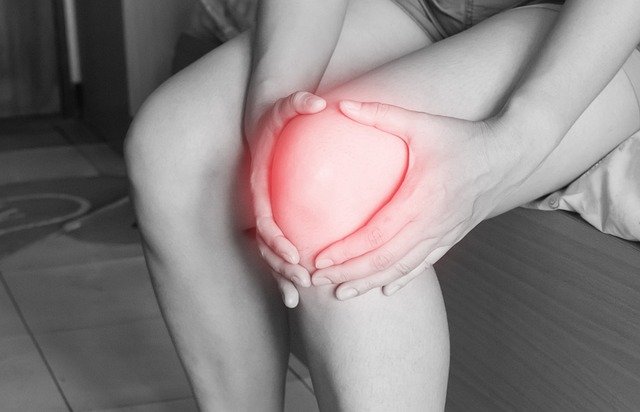Understanding Gout Treatment: Effective Ways to Manage Pain and Symptoms
Gout is a form of inflammatory arthritis characterized by sudden, severe attacks of pain, redness, and tenderness in joints. While the big toe is most commonly affected, gout can impact any joint in the body. This painful condition results from elevated levels of uric acid in the blood, leading to the formation of sharp crystal deposits in and around joints. Understanding gout's signs and symptoms, diagnosis methods, and treatment options is essential for effective management and prevention of flare-ups.

Recognizing Gout Signs And Symptoms
Gout typically manifests through several distinctive symptoms that often appear suddenly, often waking sufferers in the middle of the night. The primary symptoms include intense joint pain that is most severe within the first 12-24 hours after onset. The affected joint becomes swollen, warm, red, and extremely tender—even the weight of a bed sheet can be unbearable. While the big toe joint (podagra) is most commonly affected, gout can also develop in ankles, knees, elbows, wrists, and fingers.
As gout progresses, attacks may become more frequent, affect more joints simultaneously, and last longer. Some patients develop chronic gout, characterized by persistent pain, stiffness, and potential joint damage. Tophi—hard, painless deposits of uric acid crystals—may form under the skin around joints and other areas like the hands, feet, elbows, or ears during advanced stages. These visual markers can help identify long-standing gout cases that require immediate medical attention.
Gout Diagnosis And Treatment Approaches
Proper diagnosis is crucial for effective gout management. Physicians typically begin with a thorough medical history review and physical examination. The gold standard for diagnosis involves joint fluid analysis, where fluid is extracted from the affected joint and examined under a microscope for uric acid crystals. Additional diagnostic tools include blood tests to measure uric acid levels, although these aren’t always conclusive since some people with high uric acid levels never develop gout.
Treatment strategies generally focus on two aspects: managing acute attacks and preventing future flare-ups. For acute attacks, medications such as nonsteroidal anti-inflammatory drugs (NSAIDs), colchicine, and corticosteroids are commonly prescribed. Long-term management typically involves medications that either reduce uric acid production (like xanthine oxidase inhibitors such as allopurinol) or improve uric acid removal (like probenecid). Lifestyle modifications are equally important, including weight management, limiting alcohol consumption, avoiding high-purine foods, and staying properly hydrated.
Immediate Gout Pain Relief Methods
When a gout attack strikes, swift action can significantly reduce pain and inflammation. The most immediate step is to rest the affected joint and elevate it if possible. Applying ice to the affected area for 20-30 minutes several times daily can help reduce inflammation and alleviate pain. Over-the-counter NSAIDs like ibuprofen or naproxen sodium can provide quick relief for those without contraindications.
For severe attacks, prescription medications offer more potent options. Colchicine can be highly effective when taken within the first 12-24 hours of an attack. Corticosteroids, either oral or injected directly into the affected joint, provide rapid inflammation reduction. It’s crucial to start treatment as quickly as possible after symptoms begin, as early intervention significantly improves outcomes and shortens attack duration. Always consult with a healthcare provider before taking any medication, as some may interact with existing conditions or other drugs.
Topical Pain Relief For Gout Sufferers
While oral medications remain the primary treatment for gout, topical treatments can provide supplementary relief without the potential side effects of systemic medications. Over-the-counter topical NSAIDs like diclofenac gel can be applied directly to the affected joint, helping reduce inflammation and pain with minimal systemic absorption. These options are particularly valuable for patients who cannot take oral NSAIDs due to kidney problems, gastrointestinal issues, or medication interactions.
Various cooling menthol creams, capsaicin preparations, and essential oil blends may also offer temporary comfort. While scientific evidence for these alternatives varies, many patients report subjective improvement when used alongside conventional treatments. Some practitioners recommend topical application of diluted apple cider vinegar or cherry juice extracts, though these remedies have limited clinical research supporting their efficacy. Always discuss any complementary approaches with your healthcare provider before implementation.
How To Relieve Gout Pain Through Lifestyle Changes
Beyond medications, lifestyle modifications play a crucial role in managing gout and preventing recurrent attacks. Dietary changes represent one of the most effective approaches. Reducing consumption of high-purine foods such as red meat, organ meats, certain seafood (anchovies, sardines, mussels, scallops), and alcoholic beverages—particularly beer—can significantly lower uric acid levels. Increasing intake of water, cherries, and vitamin C-rich foods may also help manage uric acid levels.
Weight management is equally important, as excess weight increases uric acid production and decreases elimination. Regular, moderate exercise helps maintain healthy weight and improves joint function but should be approached cautiously during acute attacks. Stress management techniques like meditation, yoga, and adequate sleep can reduce inflammation throughout the body. Together with medical treatments, these lifestyle interventions create a comprehensive approach to managing gout and improving quality of life.
Gout management requires a multifaceted approach combining medication, dietary modifications, and lifestyle changes. Working closely with healthcare providers to develop a personalized treatment plan offers the best chance of controlling symptoms and preventing joint damage. With proper management, most people with gout can lead normal, active lives with minimal disruption from this painful condition.
This article is for informational purposes only and should not be considered medical advice. Please consult a qualified healthcare professional for personalized guidance and treatment.




